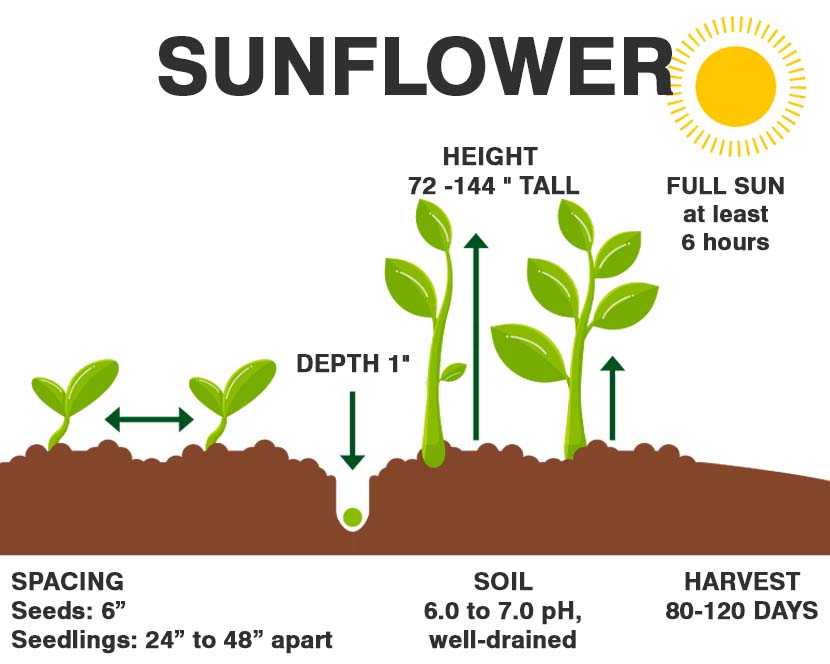Sunflowers (Helianthus annuus) are iconic blooms known for their large, vibrant heads and edible seeds. These cheerful plants can grow to impressive heights, some varieties reaching up to 12 feet tall. Sunflowers are relatively easy to grow and make a striking addition to any sunny garden space. They mature and are ready for harvest within about 80 to 120 days, depending on the variety.

Providing stakes or supports for the tallest varieties can prevent them from toppling over. This guide will help you cultivate sunflowers and enjoy their sunny presence in your garden.
| Common Name | Sunflower |
| Botanical Name | Helianthus annuus |
| Family | Asteraceae |
| Plant Type | Annual |
| Size | 6 to 12 feet tall |
| Sun Exposure | Full sun |
| Soil Type | Well-drained, fertile |
| Soil pH | Slightly acidic to neutral (6.0 to 7.5) |
| Bloom Time | Summer to fall |
| Hardiness Zones | 2-11, USDA |

When to Plant?
Plant sunflowers in the spring after the threat of frost has passed. Sunflowers are warm-season plants that thrive in hot conditions. Check our Frost Dates Across North America: First & Last Frost Dates Chart. However, the date will not be the same for every plant. Basil should be planted after the last spring frost. You can plant during the summer as well.
Companions
Plant sunflowers with:
- Vegetables: Cucumbers, corn, and other climbing plants that can use the tall sunflower stalks as natural support.
- Avoid: Planting sunflowers near potatoes or beans, as they can inhibit each other’s growth.
How to Plant
- Soil Preparation: Enrich the soil with compost or a balanced fertilizer before planting. Sunflowers are heavy feeders and will benefit from the added nutrients.
- Planting Depth and Spacing: Plant seeds 1 inch deep and 6 inches apart. Thin seedlings to about 2 feet apart for smaller varieties or 3 to 4 feet apart for larger varieties.
- Support: For giant varieties, provide a sturdy stake or trellis for support as they grow.

How to Cultivate
- Watering: Water deeply once a week, more often if you’re experiencing very hot or dry weather.
- Mulching: Use mulch to conserve moisture and keep roots cool.
- Pest Management: Watch for aphids and beetles and manage them using organic pesticides if necessary.
How to Harvest
- Timing: Harvest sunflowers when the back of the flower head turns from green to yellow or brown.
- Method: Cut the stem about 6 inches below the flower head with a sharp knife or shears.
- Seed Harvesting: To harvest seeds, let the flower head dry on or off the stem until the seeds are plump and the husks begin to loosen.
Hydroponics
- System Setup: Sunflowers can be grown hydroponically using a deep water culture or ebb and flow system.
- Nutrients: Ensure the nutrient solution is high in phosphorus and potassium to support flower development.
Common Pests and Diseases
Sunflower Beetle (Zygogramma exclamationis)
- Symptoms: Larvae and adults feed on leaves, causing defoliation.
- Management: Handpick or use organic pesticides.

Sclerotinia Stem Rot (Sclerotinia sclerotiorum)

- Symptoms: Stems develop a soft rot, which can cause the plant to collapse.
- Cause: Fungus.
- Management: Rotate crops and avoid excess moisture.


